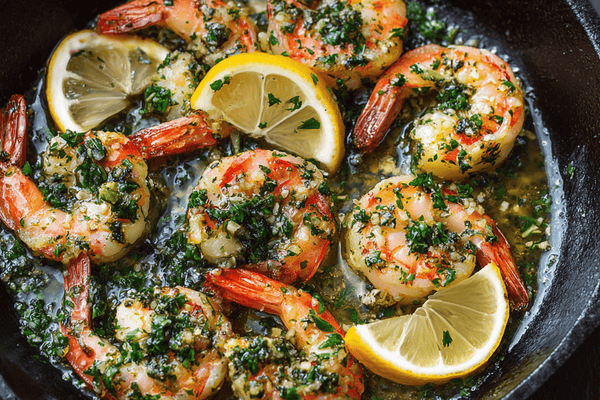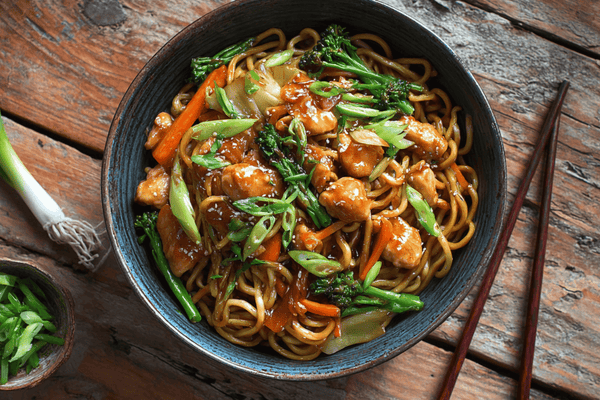
Who doesn't love crispy, smoky bacon hot off the grill? Grilling bacon is a great way to add some smoky flavor to your favorite breakfast food, and it's also an excellent option for cooking bacon when you want to keep the kitchen cool. But grilling bacon can be tricky, and if you're not careful, you could end up with burnt, dry bacon that's no good.
In this article, we'll show you how to grill bacon perfectly every time. We'll cover everything from choosing the right bacon to setting up your grill and share some tips and tricks to help you get the best results. So, let's get started!
Table of content
Choosing the Right Cut of Bacon for Grilling
Before you start grilling bacon, it's important to choose the right cut of bacon. Thin-cut bacon is generally cut to be about 1/16 to 1/8 inch thick, while thick-cut bacon is typically cut to be 1/4 inch or more. Here are some of the key differences between thin and thick-cut bacon:
Cooking Time
One of the most noticeable differences between thin and thick-cut bacon is the cooking time. Thin-cut bacon cooks more quickly than thick-cut bacon. Because it's thinner, it can become crispy and overcooked more easily than thick-cut bacon. Thick-cut bacon takes longer to cook, but it can stand up to higher heat and won't burn as easily.
Texture
The thickness of the bacon also affects its texture. Thin-cut bacon is generally more crispy than thick-cut bacon. Because it cooks more quickly, it can become crispy all the way through. Thick-cut bacon, on the other hand, has a meatier texture and can be chewier than thin-cut bacon.
Flavor
Another difference between thin and thick-cut bacon is the flavor. Thin-cut bacon is generally more salty than thick-cut bacon. This is because the salt and flavorings in the bacon are more concentrated in the thinner slices. Thick-cut bacon has a more balanced flavor, with a meatier taste that pairs well with other flavors.
Versatility
Thin-cut bacon is more versatile than thick-cut bacon. Because it's thinner and more delicate, it's easier to use in dishes like salads, sandwiches, and appetizers. Thick-cut bacon is better suited for heartier dishes like burgers, steaks, and stews however, both thin and thick-cut bacon have their own unique characteristics and are suited for different types of dishes. Thin-cut bacon is crispy, salty, and versatile, while thick-cut bacon is meaty, chewy, and stands up well to high heat.
When choosing between the two, consider the dish you're making and which type of bacon will work best for your recipe.
Choosing Cured or Uncured Bacon for Grilling
When it comes to bacon, there are two main types: cured and uncured. Cured bacon is the most common type you'll find in grocery stores. Uncured bacon is less common but becoming more popular as people seek healthier, less processed options. Here are the main differences between cured and uncured bacon:
Curing Process
The main difference between cured and uncured bacon is how they are processed. Cured bacon is treated with nitrates or nitrites, which are compounds that help preserve the meat and prevent spoilage. These compounds also give cured bacon its characteristic pink color and smoky flavor.
Uncured bacon, on the other hand, is not treated with nitrates or nitrites. Instead, it's typically cured using natural ingredients like celery juice, which contains naturally occurring nitrates. This type of bacon may still have a pink color and smoky flavor, but it won't have the same level of preservatives as cured bacon.
Flavor
Cured and uncured bacon have slightly different flavors. Cured bacon has a smoky, salty flavor that many people love. Uncured bacon, on the other hand, may have a milder, more natural flavor. Some people find uncured bacon tastes fresher and less processed than cured bacon.
Health Benefits
One of the main reasons people choose uncured bacon is because it's perceived as being healthier than cured bacon. Cured bacon contains nitrates and nitrites, which have been linked to increased cancer risk in some studies. While the evidence is inconclusive, some people avoid these compounds as a precaution.
On the other hand, Uncured bacon is often marketed as a healthier option because it does not contain nitrates or nitrites. However, it's worth noting that uncured bacon can still be high in fat, salt, and calories, so it's not necessarily a healthy food.
Availability
Cured bacon is widely available in most grocery stores and is the most common type of bacon. Uncured bacon is less common but can usually be found at health food stores, speciality markets, and online retailers.
When deciding which bacon to use, remember that both cured and uncured bacon have their own unique characteristics and are suited for different tastes and preferences. Cured bacon is the most common and has a smoky, salty flavor, while uncured bacon is less processed and often perceived as healthier. When choosing between the two, consider your personal preferences and the availability of each type in your area.
Preparing Your Grill for Bacon
Now that you've chosen the right bacon, it's time to prepare your grill. Here are some tips for getting your grill ready to cook bacon.
Clean Your Grill Grates
Before you start grilling, make sure your grill grates are clean. Use a grill brush to remove any debris or leftover food from your last cookout. This will help prevent your bacon from sticking to the grates and will give you those beautiful grill marks.
Preheat Your Grill
Preheat your grill to medium-high heat, around 375°F to 400°F. This will ensure that your bacon cooks evenly and doesn't burn. If your grill doesn't have a thermometer, you can test the heat by holding your hand about 6 inches above the grates. The grill is hot enough if you can only hold your hand there for a few seconds.
Grilling Bacon
Now it's time to grill the bacon! Here's how to do it:
Arrange Your Bacon on the Grill
Arrange the bacon on the grill in a single layer, ensuring the slices don't overlap. This will help the bacon cook evenly and will prevent it from sticking together.
Flip the Bacon
After a few minutes, flip the bacon using tongs. This will help ensure that both sides cook evenly. If you're grilling thin-cut bacon, you may need to flip it more frequently to prevent burning.
Watch Your Bacon Closely
Bacon can cook quickly on the grill, so keeping a close eye on it is important. Check the bacon frequently and adjust the heat as needed. If the bacon is cooking too quickly, you may need to lower the heat or move the bacon to a cooler part of the grill.
Remove the Bacon from the Grill
Once the bacon is cooked to your liking, remove it from the grill using tongs or a spatula. Place it on a paper towel-lined plate to absorb any excess grease.
Tips and Tricks for Grilling Bacon
Now that you know the basics of grilling bacon, here are some tips and tricks to help you get the best results.
Use a Drip Pan
Bacon can produce a lot of grease, which can cause flare-ups on the grill. To prevent this, place a drip pan under the bacon to catch any excess grease. This will also make clean-up easier.
Add Some Flavor
Bacon is delicious on its own, but you can also add some extra flavor by brushing it with a glaze or marinade. Try brushing the bacon with maple syrup or honey for a sweet and smoky flavor, or use a barbecue sauce for a tangy kick.
Try Different Types of Wood Chips
If you're using a charcoal grill, try adding some wood chips to the coals for extra smoky flavor. Hickory, mesquite, and applewood are all great options for grilling bacon.
Get Creative with Your Bacon
Grilled bacon is a versatile ingredient that can be used in various dishes. Try using it in a BLT sandwich, crumble it over a salad, or use it as a topping for a grilled pizza. Here's a simple and delicious recipe that uses grilled bacon:
Grilled Bacon-Wrapped Asparagus
Ingredients:
- 1 lb asparagus spears, trimmed
- 6-8 slices thick-cut bacon
- 2 tbsp olive oil
- 1 tbsp balsamic vinegar
- Salt and pepper, to taste
Instructions:
- Preheat your grill to medium-high heat.
- In a bowl, toss the asparagus spears with olive oil, balsamic vinegar, salt, and pepper.
- Divide the asparagus spears into 6-8 bundles, depending on how many slices of bacon you have.
- Wrap each bundle of asparagus with a slice of bacon, starting at the bottom and wrapping it all the way to the top.
- Secure the bacon with a toothpick, if needed.
- Place the bacon-wrapped asparagus on the grill and cook for 8-10 minutes, turning occasionally, until the bacon is crispy and the asparagus is tender.
- Remove from the grill and let cool for a few minutes before serving.
This recipe is a great way to incorporate grilled bacon into a healthy and delicious side dish. The smoky flavor of the bacon pairs perfectly with the tender, flavorful asparagus. It's a perfect dish for a summer barbecue or a weeknight dinner.
FAQ
Q: Can I grill bacon on a gas grill?
A: Yes, you can grill bacon on a gas grill. Just follow the same steps as you would for a charcoal grill.
Q: Do I need to use a drip pan when grilling bacon?
A: Using a drip pan is recommended when grilling bacon to prevent flare-ups and make clean-up easier.
Q: Can I use thin-cut bacon for grilling?
A: Yes, you can use thin-cut bacon for grilling, but it requires more attention to prevent burning.
Q: How do I prevent my bacon from sticking to the grill?
A: Make sure your grill grates are clean and well-oiled before grilling bacon to prevent sticking.
Q: What should I do if my bacon is cooking too quickly?
A: If your bacon is cooking too quickly, lower the heat or move the bacon to a cooler part of the grill.
Conclusion
Grilling bacon is a delicious and easy way to add a smoky flavor to your favorite breakfast food. You can grill bacon perfectly every time by choosing the right bacon, preparing your grill, and following these tips and tricks. Whether you're making a classic BLT sandwich or trying out a new recipe, grilled bacon is sure to be a crowd-pleaser. So fire up the grill and get ready to make some delicious bacon!



